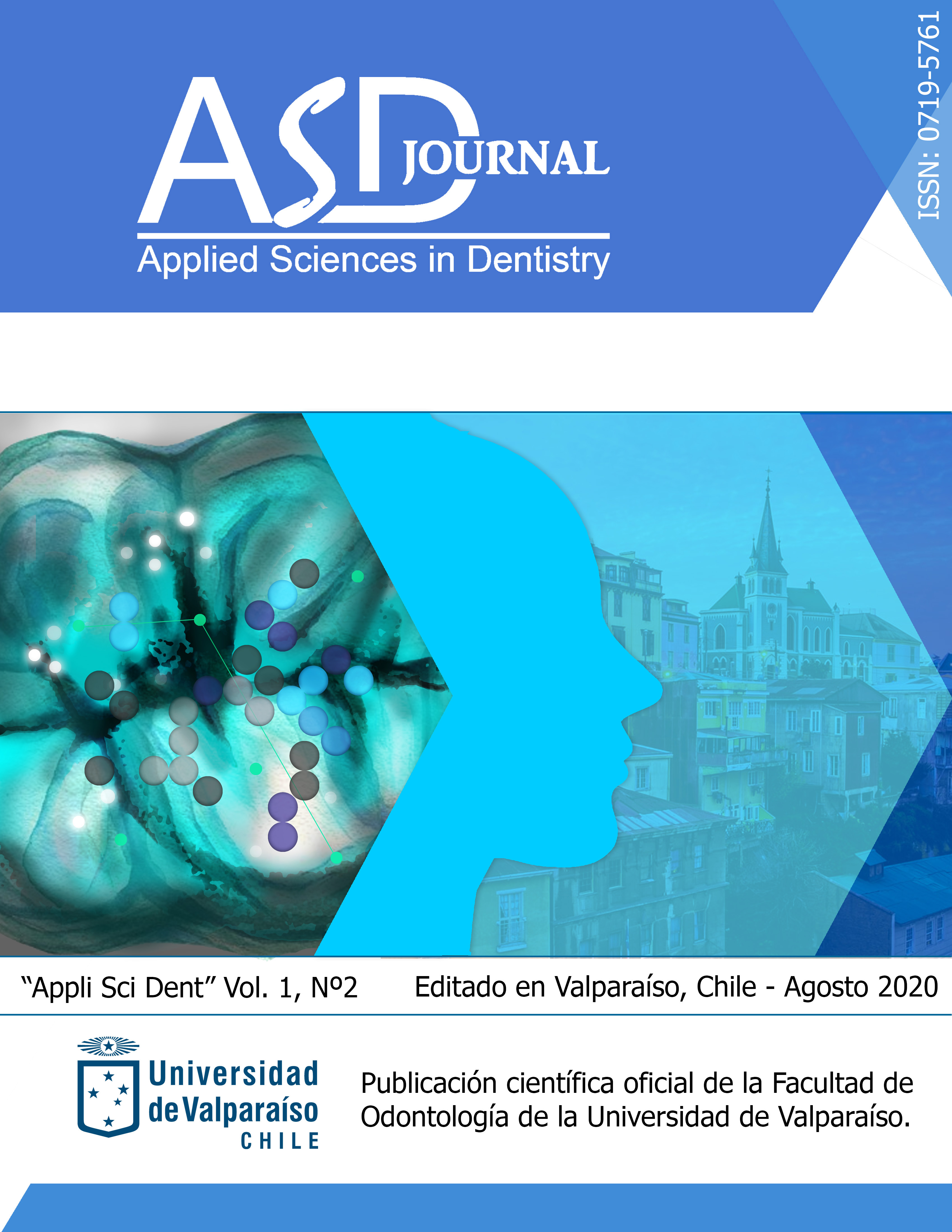IN VITRO EVALUATION OF DENTINE ADHESIVE RESISTANCE AFTER APPLYING TWO IRRIGATION SEQUENCES
DOI:
https://doi.org/10.22370/asd.2020.1.2.2416Keywords:
Endodontics, irrigators, coronal sealing, adhesive systems, hybrid layerAbstract
Objective: To evaluate the bond-strength (MPa) of an adhesive system to intracameral dentin after 2 different endodontic irrigation sequences.
Material and Methods: An in vitro double-blinded experimental cross-over study was conducted. 23 teeth were extracted, and sectioned, exposing the pulp chamber. Samples were separated into three groups: the first group (control) used a 0.9% saline solution; in the second group, the conventional sequence of irrigation of the University of Valparaíso was employed (5% NaOCl -18% EDTA-0.9% saline solution); and finally the third group, the experimental sequence was employed (5% NaOCl, 18% EDTA and 15% saline solution). The sealing technique was then conducted using universal 3M ESPE Single Bond adhesive and Filtek Z350 resin. Subsequently, the bond-strength test was performed in a microtensile, until fracture.
Results: The control group had the highest values of frequency of adhesive and cohesive failure compared to the conventional and experimental group but presented a statistically non-significant association. As for the irrigation protocols, they did not show a major difference in their adhesive bond-strength when compared.
Conclusion: The results of this study conclude that the adhesive resistance is not significantly modified by different irrigation protocols.
Downloads
Downloads
Published
How to Cite
Issue
Section
License
Authors retain copyright and grant the journal right of first publication with the work simultaneously licensed under a Creative Commons Attribution 4.0 International License that allows others to share the work with an acknowledgment of the work's authorship and initial publication in this journal.
Authors are able to enter into separate, additional contractual arrangements for the non-exclusive distribution of the journal's published version of the work (e.g., post it to an institutional repository, in a journal or publish it in a book), with an acknowledgment of its initial publication in this journal.
Authors are encouraged to post their work online (e.g., in their institutional repositories or on their website) only after publication online.
When uploading, disseminating or repurposing Open Access publications, the journal should be clearly identified as the original source and proper citation information provided. In addition to the Version of Record (final published version), authors should deposit the URL/DOI of their published article in any repository.


